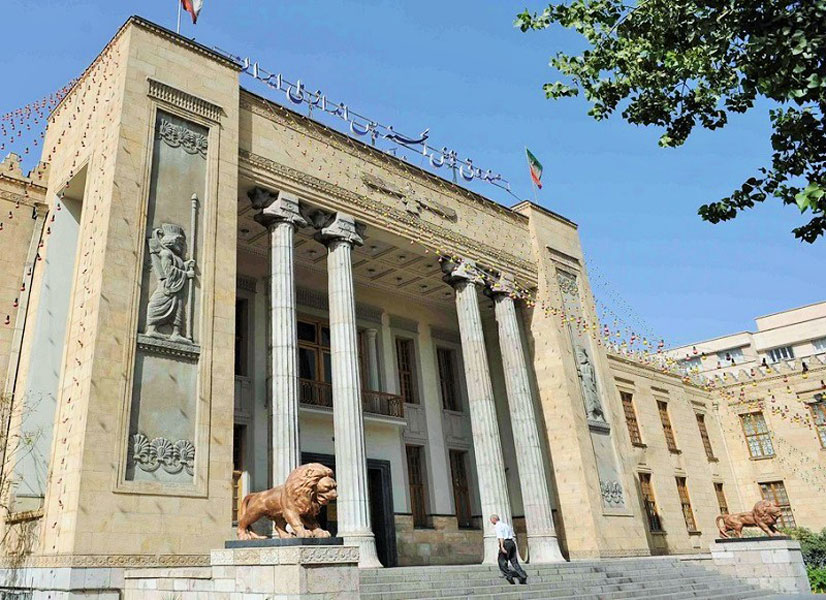
A Collection of the most expensive jewels of the world, the incomparable “Treasury of the National Jewels” is collected over centuries. The value of the objects exhibited cannot only be judged by putting prices on them, but it should also be borne in mind that this collection reflects the creativity and taste of Iranian craftsmen and artists during different eras and represents the highly rich cultural heritage of a vast country.
These decorative jewels were served as evidences for glory extravagance, power and wealth of the rulers over the past dynasties. Before Safavid dynasty, there were certain jewels kept in the royal treasury, but it was only during Safavid period that some foreign travelers started mentioning them in whatever they were writing. They were people like Jean-Baptiste Tavernier, Chevalier Chardin, the Shirley brothers, George Mainwaring and so forth.
The gem specialists of Safavid court brought fine and precious stones to the country from the markets of India, the Ottoman Empire and European countries like France and Italy. Later, many of them were looted, presented, bought and recollected as decades and centuries went by.
Eventually, in 1937, a major portion of the items available was transferred to Bank Melli Iran and formed part of the reserves for note issues and later became collateral for government liabilities to the Bank.
The building of the present collection was constructed in 1955. In 1960, by the establishment of Bank Markazi Iran, the treasury was transferred there and deposited with the Central Bank. Now it is also safeguarded by the Central bank of the Islamic republic of Iran. Because of all mentioned, this unparallel collection is so unique that certainly forms an unforgettable memory in any visitor’s mind. Even the most qualified experts of the world have not able to evaluate and estimate any total price for this breathtaking collection. It is really an incredibly fascinating collection worth visiting.
A Quick Look at the Objects in National Jewels Treasury
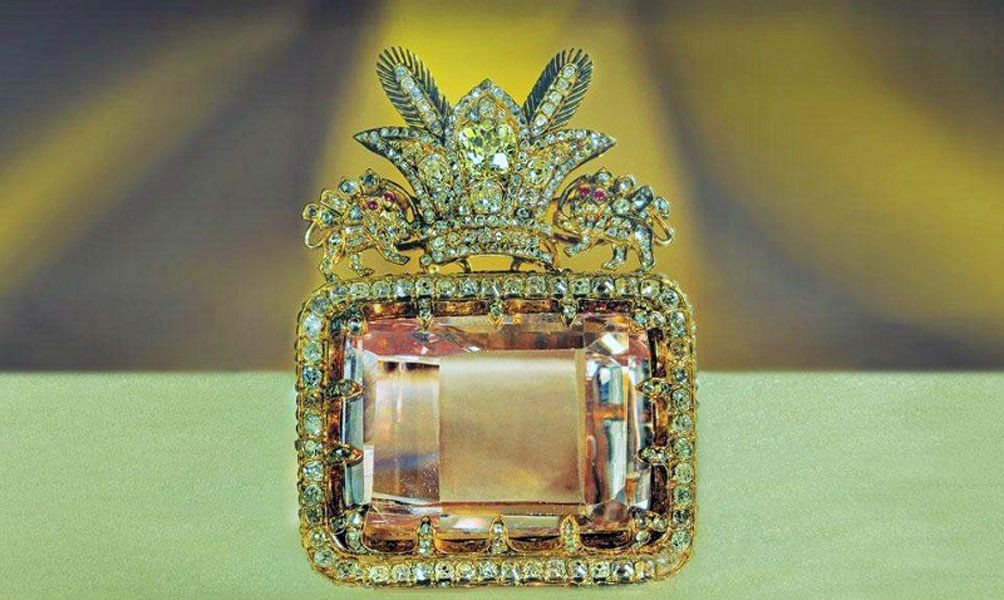
There are 37 showcases with hundreds of items in them. Here is only a general introduction of them and some worldly famous pieces:
- There are gold and jeweled objects like water pipes, dish-covers, flower vases, boxes, ewer and basins, knives, bowls, etc;
- There is displayed a gold decanter with outstanding enamel work containing pictures of flowers and birds. In the upper half, there are pictures of women. This decanter is considered one of the best examples of Iranian enamel work;
- There is also a pair of gold candlesticks decorated with spinals, diamonds, emeralds, rubies, tassels of pearls and emeralds are displayed;
- The coconut shaped jar of a water pipe made of a beautifully carved ostrich eggshell;
- Various objects decorated with Iranian turquoises like water pipe, aigrettes, swords, etc;
- Swords, daggers, quivers, rifles and laces beautifully jeweled and decorated;
- Various aigrettes encrusted with jewels;
- There are also numerous ornaments such as brooches, watch chains, aigrettes, buckles, necklaces, purses, armlets, and bracelets;
- The “Samarian spinal” weighing 500 carats, the largest known spinal of the world, which is said to be used to adorn the neck of the Golden calf, according to legends;
- There are tassels of pearls, totally weighing 16 Kg used as curtain decorations;
- There are lots of gold coins and commemorative medals that could be found on various occasions;
- There are also hand-woven robes decorated with precious stones;
- “Nader throne” is another breathtaking item composed of 12 separate and portable parts. The total number of precious stones set on the throne amounts to 26,733;
- “Abbas Mirza’s head piece” made of red satin and velvet cloth sown with pearls and gold sequins is another object used on official occasions;
- There are 62 different cuts of the diamonds, from the most simple to very rare cuts like the jubilee and briolette;
- There can also be visited several high quality blue sapphires the largest of which is the one weighing 141.91 carats;
- “Iranian Yellows”, which are enormous diamonds purchased by Nasser-ed-din Shah on his third trip to Europe from Cape mines of South Africa, are also displayed;
- There are jewels assigned for the use of the Pahlavi family, Farah Pahlavi, the queen mother, Mohammad Reza Pahlavi and other members of Pahlavi dynasty;
- There have been displayed crowns like the ones used by Mohammad Reza Pahlavi, Qajar kings (Kiany Crown), Farah Pahlavi’s crown;
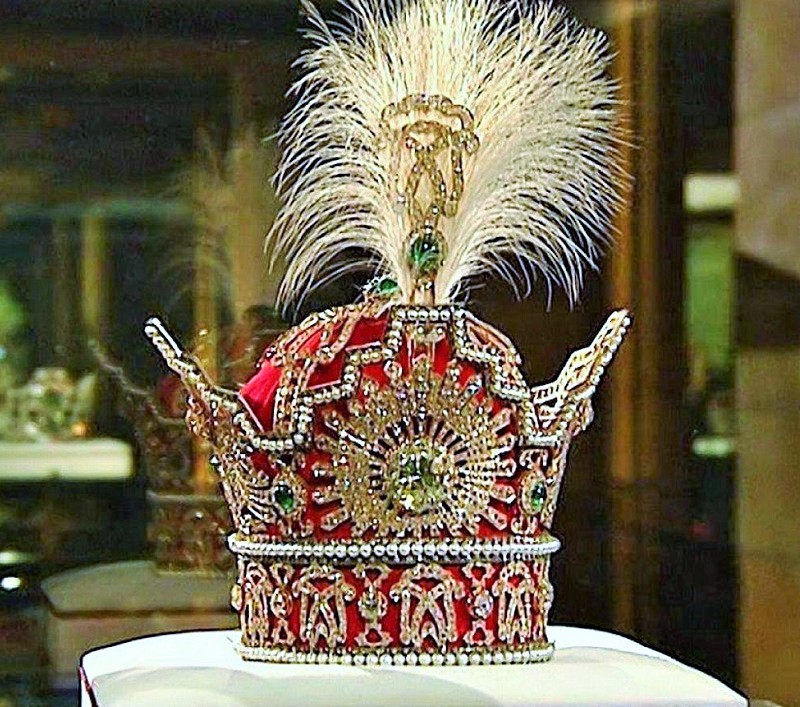
- There is a unique piece called “Darya-ye-Noor” or sea of light, the largest pink diamond in the world. It is approximately 182 carats with a rare color among diamonds, pale pink;
- Another piece that is considered to be “Kooh-e-Noor” or mountain of light together with the previous one, were both in the possession of Nader Shah. Later, the latter one was taken to Afghanistan and after being passed into other people’s possession, it was presented to Queen Victoria. Now it is in the queen mother’s crown in England; and,
- “Nader’s Aigrette”, set with diamonds and emeralds, weighing 781 carats.






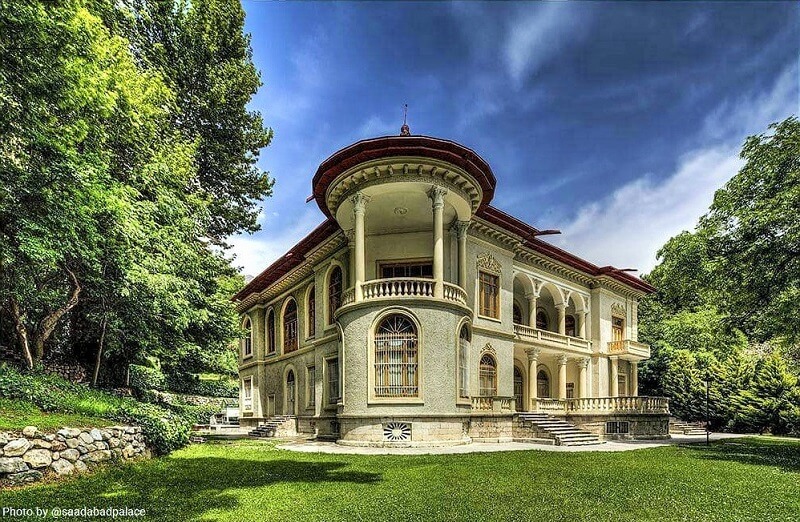
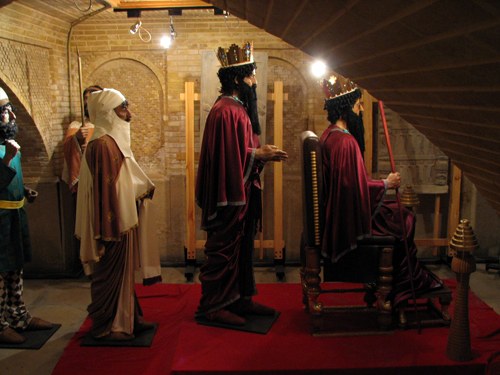






This is such a great resource that you are providing about Iran and you give it away for free. I enjoy seeing websites that understand the value of providing a prime resource for free. I truly loved reading your post. Thanks!
Very nice reading, i always love to read something interesting about jewelry and learn new things.
Seeing is believing Selina! I hope one day you can visit this collection and explore the richness of the rare and unique items here.